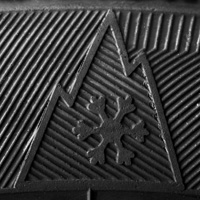Summer Tyres
Summer tyres are designed for temperatures above freezing. They are ideal for Maltese weather and are also designed to work in the rain.
All Season Tyres

As the name suggests, all season tyres are designed to provide safety when driving in various conditions. The advantage to all season tyres is that they can remain on a vehicle whether it is spring, summer or fall (autumn), but may not be suitable in cold temperatures or snowy weather. They also provide a quieter ride than winter tyres.
Performance Tyres
Dedicated summer tyres (also known as performance tyres) improve the performance and aesthetics of a vehicle. Performance tyres are designed for handling and stability, which can result in a stiffer tyre (not easily bent/ changed in shape), and so, may affect the comfort of your ride. The tread is also wider to provide more contact on the road and better dry traction (the tyres ability to corner, brake and grip during acceleration under dry road conditions). The special compound used enhances the tyres performance, but may not provide the same tread wear as all season tyres.
Winter Tyres
Winter tyres use special compounds to improve traction, breaking and handling whenever the thermometer dips below 7°C. Although all weather tyres are good in many conditions, they don’t provide the same grip and control that winter tyres do in cold or snowy weather. Please note that Tyres Direct does not currently offer winter tyres for the Maltese market.
Run-Flat Tyres
A run-flat tyre is a vehicle tyre designed to resist the effects of deflation when punctured, and so, enables the vehicle to continue being driven at reduced speeds (up to 55 mph (90 km/h)) for limited distances of up to 100 mi (160 km), or even 200 mi (320 km) depending on the type of run-flat tyre.
Self-supporting run-flat tyres
The origins of the commercial self-supporting run-flat tyre started in 1935 with a tyre that had a fabric inner lining. The tyre was advertised as a protection against blow outs, a common and dangerous occurrence in the 1930’s.
In 1934, Michelin introduced a tyre that was based on the technology developed for local commuter trains and trolleys. It had a safety rim inside the tyre which, if punctured, would run on a special foam lining. The tyre was sold for military use and for specialized vehicles like bank armored vehicles, advertised as “semi-bullet proof”. While the tyre performed as advertised, it was far too expensive to be a feasible option for private automobile users.
In 1958, Chrysler teamed with Goodyear to offer Captive Air run-flat tyres using an interlining to carry the weight.
In 1972, Dunlop launched the Denovo “fail-safe” wheel and tyre system that became optional equipment on the Rover P6 3500 in 1973, and by 1983, evolved into the TD/ Denloc which became standard equipment across the whole Austin Metro range.
Most recently, Bridgestone run-flat tyres are supplied on some new model BMW cars. The automaker promoted these as a safety feature and as an alternative to carrying a spare tyre.
Self-supporting run-flat tyres are now common on light trucks and passenger cars and typically allow a vehicle to drive for 50 miles (80 km) at around 50 miles per hour (80 km/h). However, if the tyres are subject to misuse, they may become irreparably damaged in the process. In addition, if the tyre is punctured in the sidewall or at the edge of the tread, repair may be impossible and unsafe. These tyres carry a 20% to 40% weight penalty over similar standard tyres. The thicker sidewall also means higher rolling resistance, thus reducing the vehicle’s gas mileage.
Other Run-flat tyre systems
Tyre manufacturers generally have their own run-flat tyre system. If you have interest in comparing systems or reading more about them, more information can be found on the respective manufacturer websites.
